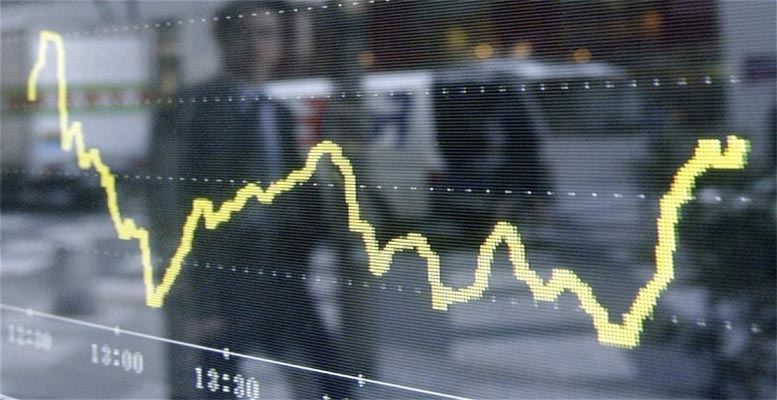Keith Wade (Schroeders) | The world economy is in the midst of a sudden stop where activity has been brought to a halt by official action to suppress the coronavirus. We have updated our forecasts and see a severe recession in global GDP this year with the downturn concentrated in the second quarter (see here).
On our forecast the contraction in global activity in 2020 of 3% will exceed that seen in the first year of the Global Financial Crisis (GFC) when global GDP contracted by 0.5%.
However, unlike the GFC we do see a relatively rapid bounce back. After the downturn in 2008 it took just over three years for the US economy to regain the level of GDP achieved prior to the crisis, one of the slowest recoveries on record.
Growth was held back by the unwinding of the debt bubble which meant that banks and households were focused on reducing their borrowing despite central banks cutting interest rates to their lowest levels on record. The debt reduction process was long and arduous and is still not over for the household sector which continues to reduce its leverage and cut debt relative to income. The scars from the GFC run deep.
This time is expected to be very different as, rather than an L-shape, we forecast the recovery to follow a V-shape path, with the US returning to its previous level of activity in the third quarter of this year. Such an outcome reflects expectations of the lifting of restrictions on movement and the return to work as business restarts, shops re-open and normal activity resumes.
Not everything will come back at once and there will be some permanent damage, but the return to work will bring a significant reacceleration in growth, especially when supported by loose monetary and fiscal policy.
The key risk to our baseline V forecast is a potential return of the virus in the third quarter of this year, resulting in another shutdown in Q4. Such a risk is consistent with the influential analysis from Imperial College London (here) which, in respect of the policy being pursued to contain the virus around the globe, says:
“The major challenge of suppression is that this type of intensive intervention package – or something equivalently effective at reducing transmission – will need to be maintained until a vaccine becomes available (potentially 18 months or more) – given that we predict that transmission will quickly rebound if interventions are relaxed.”
On this basis the economy could experience a number of aftershocks following the initial outbreak with restrictions being re-imposed and lifted so as to manage the capacity of the healthcare system to cope with the number of critical cases. In economic terms this would lead to a double dip recession with businesses closing again as restrictions on movement are re-imposed.
We have attempted to capture this with a “Covid-19 lingers scenario” which sees the economy take a second dive in Q4 this year before experiencing another rebound in Q1 2021. Our assumption is that a vaccine is developed and successfully deployed in Q2 2021 thus allowing a resumption of normal activity in Q3.
The result is a “W” path for US GDP which contrasts with the “V” in our baseline and the “L” experienced during the first two years of the GFC (see chart). The path of global GDP would be similar with other countries following the same policy of attempting to suppress the virus so as to manage the outbreak in line with the capacity of their health system.
On this projection the level of output still returns to that seen in the baseline by the end of 2021 with growth likely to be robust at the end of the period as confidence returns to the economy and spending strengthens. We expect monetary policy to remain loose during this period spurring a resumption of borrowing and investment in housing and business equipment.
Fiscal policy is also likely to remain loose as the economy will still be struggling when budgets are set.
However, the greater volatility in output in the “Covid-19 lingers scenario” means that the impact on incomes would be greater with more unemployment and lay-offs. There would be tremendous strain on workers with children in the event of further school closures and those with elderly relatives, resulting in a fall in labour supply (see here for more on this factor).
For the corporate sector it would mean two major falls in activity in 2020 such that, compared to 2019, corporate profits decline by nearly 40% versus a baseline forecast where they decline by 15%. The rebound is stronger, but the risk of default and bankruptcy is clearly higher, such that the question will be which companies can survive the downturn to see the recovery.
Official support will be key as the programmes put in place by central banks and governments will have to absorb much greater losses and incur far more debt than in the baseline. Estimates from the Office for Budget Responsibility (OBR) suggest that UK government borrowing rises by 0.7% of GDP for every 1% fall in GDP and on this basis would be 5.4% of GDP or roughly £125 billion higher. This is before factoring in the cost of support programmes worth another 2% to 3% of GDP.
Other countries can expect to see similar outcomes resulting in a global surge of debt issuance. At this point the extra paper is likely to be absorbed by central bank balance sheets as they step up asset purchase programmes (QE). Ultimately though it would mean higher taxes and cuts in spending elsewhere if we are not to see higher borrowing costs.





